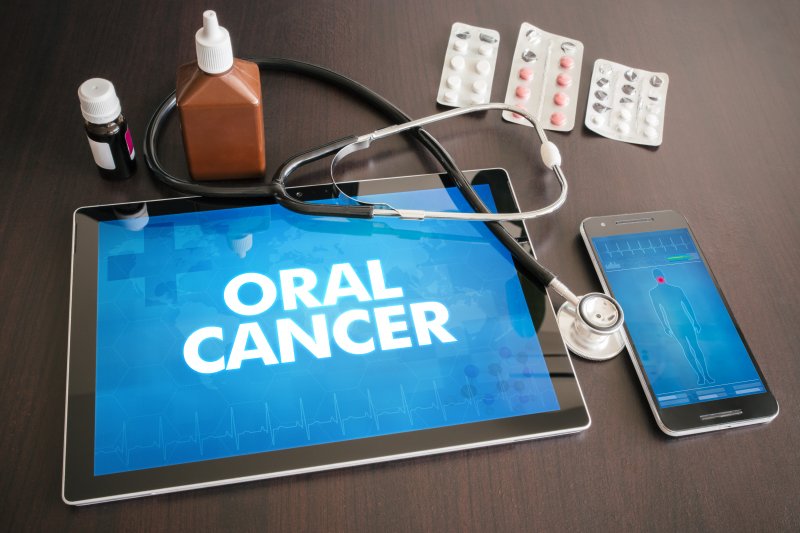
April is Oral Cancer Awareness Month, which is a time when health professionals of all kinds do what they can to help their patients understand the prevalence and significance of this condition.
Early detection is one of the most important things that you can do to improve your chances if you contract this condition. That’s why every checkup with your dentist will include an oral cancer screening.
If you’re curious, here’s what that type of screening is likely to look like.
The Simple Exam
For the most part, oral cancer screenings are incredibly fast and simple. Your dentist will begin by just taking a look inside your mouth for any red or white patches of discoloration.
They’ll then take gloved hands and feel the inside of your mouth for any irregularities. Finally, they will look and feel along the neck for any lumps or protrusions.
And then you’re done! As simple as the screening is, just this much can potentially be lifesaving in the right situation.
More Sophisticated Techniques
While oral cancer screenings are simple, many dentists will incorporate some other tools into their exams to ensure that they’re seeing everything. Screening dye is a good example—dentists may have you rinse your mouth with this blue dye, which will be taken up by any abnormal tissue. This will make it stand out from the rest of the mouth.
There are also oral cancer screening lights, which cause different patches in the mouth to glow different colors. Healthy tissue will glow white, and unhealthy tissue will appear much darker in the mouth.
Follow Up
If your dentist finds something that they think may be connected to cancer, they’ll likely ask you to come in for a follow-up appointment. That isn’t necessarily indicative of a serious issue, as there are plenty of small sores and abrasions that may seem like cancer.
The difference is cancerous lesions and sores won’t fade with time, so if the abnormality is still present at a follow-up appointment, they may collect a tissue sample for a biopsy. This will be able to detect any cancer cells in the mouth.
About the Author
Dr. Xinxing Liu loves that dentistry gives her an opportunity to use her artistic and scientific skills to help people feel their best. She underwent a lot of dental care as a child, so she has immense empathy for her patients. Dr. Liu received her degree from the Nova Southeastern University College of Dental Medicine, and she works hard to help her patient get the highest level of dental care possible.
If you have any questions about oral cancer, she can be reached at her website or by phone at (469) 210-7223.
